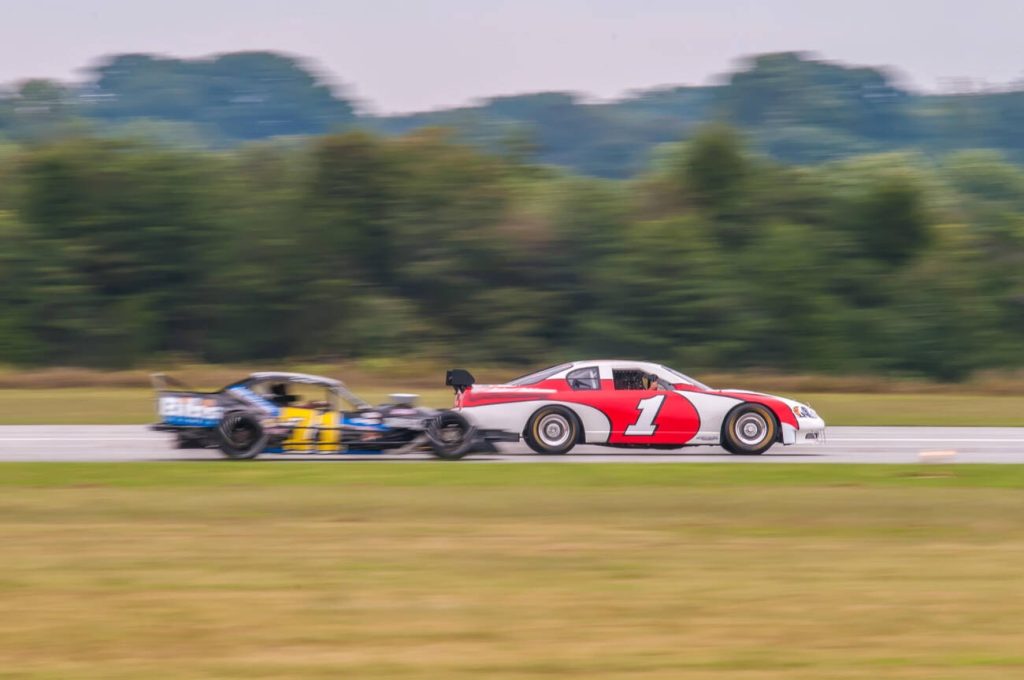From sleek aerodynamics that slice through the air to powerful engines that ignite a burst of energy, every aspect is meticulously crafted for maximum performance. So grab your helmet and prepare to explore the thrilling world of race car engineering where speed is king.
Aerodynamics
Aerodynamics play a crucial role in the speed of Formula One cars, as they generate downforce for improved grip and faster turns. The wing design is essential in creating this downforce. Teams spend a significant amount of their budgets on optimizing the aerodynamics of their cars. Downforce optimization is key to maximizing cornering stability and high-speed performance. By carefully managing airflow around the car, teams can reduce drag and increase overall speed. The shape and placement of wings contribute to maintaining stability during corners and improving control at high speeds. Achieving the right balance between downforce and minimizing drag is crucial for achieving faster lap times. In conclusion, aerodynamics are vital for enhancing the overall performance and speed of Formula One cars, making them go faster on the track.
Engine Performance
To increase your speed on the track, you should consider engine performance and how turbochargers and superchargers can boost your car’s power. Engine tuning plays a crucial role in maximizing performance. By optimizing the engine’s settings, you can improve power delivery and overall efficiency. Turbocharging technology is a great way to increase horsepower without adding too much weight to the car. It utilizes exhaust gases to spin a turbine that compresses air into the engine, resulting in more power output. Superchargers, on the other hand, are driven directly by the engine and provide instant power boosts. Along with turbocharging or supercharging, optimizing your exhaust system can further enhance performance by reducing backpressure and improving airflow. This combination of engine upgrades can significantly improve your race car’s speed and acceleration on the track.
Suspension and Chassis
If you want to improve your lap times, adjusting the suspension and chassis of your race car can greatly enhance its handling and cornering capabilities. Here are four key elements to consider:
- Adjustable Suspension: Fine-tuning your suspension allows you to optimize the car’s performance for different track conditions. You can adjust the dampening and stiffness settings to find the perfect balance between comfort and responsiveness.
- Roll Cages: Installing roll cages not only improves safety but also adds structural rigidity to the chassis. This helps reduce flexing during high-speed turns, providing better stability and control.
- Lightweight Chassis Materials: Using lightweight materials like carbon fiber or aluminum for the chassis reduces overall weight, improving acceleration and maneuverability on the track.
- Lowered Ride Height: Lowering the ride height of your race car lowers its center of gravity, reducing body roll during corners and increasing traction for faster lap times.
Tires and Wheels
When it comes to improving your lap times, choosing high-performance racing tires with enhanced grip can greatly enhance the handling and traction of your race car. Tire compounds play a crucial role in determining the grip level of your tires. By selecting the right tire compound for specific track conditions, you can optimize the performance of your race car. Additionally, making tire pressure adjustments based on track temperature and surface conditions is essential for maximizing grip. Advancements in tire technology have led to improved tread patterns and construction techniques that further enhance grip and performance. Regular analysis of tire wear helps identify any issues with alignment or suspension setup that may be affecting performance. So, if you want to go faster on the track, pay attention to your tires – they can make a significant difference in your race car’s performance.
Driver Training and Strategy
Improve your lap times by honing your driving skills through rigorous training and mastering strategic overtaking techniques. Here are four key areas to focus on for driver training and strategy:
- Pit stop strategies: Learn how to efficiently refuel and change tires during pit stops, minimizing time off the track and maximizing race performance.
- Braking techniques: Master the art of braking, understanding when to brake early or late in corners for optimal speed and control.
- Overtaking strategies: Develop a keen sense of timing and positioning, knowing when and where to make bold overtakes while minimizing risk.
- Mental preparation and strategic decision making: Train your mind to stay focused under pressure, making split-second decisions that can give you an edge over your competitors.
Factors Affecting Race Car Performance
To maximize your race car’s performance, understanding the various factors that contribute to its speed and handling is crucial. The impact of weight distribution, role of tire pressure, importance of brake systems, effect of suspension tuning, and role of fuel efficiency all play a significant role in determining how fast your race car can go.
Take a look at the table below to visualize the different factors:
| Factors | Description | Effect on Performance |
|---|---|---|
| Weight Distribution | Proper balance for stability | Improved handling |
| Tire Pressure | Optimal pressure for grip | Increased traction |
| Brake Systems | Reliable stopping power | Enhanced control |
| Suspension Tuning | Adjustments for smoother rides | Better cornering |
| Fuel Efficiency | Efficient use of fuel | Longer endurance |
Physics in Race Car Performance
Understanding the principles of physics is essential for optimizing aerodynamics and enhancing the performance of your race car. Physics plays a crucial role in determining how fast your car can go on the track. Here are four key factors that physics influences in race car performance:
- Impact of Drag: Drag is a force that acts opposite to the direction of motion, slowing down the car. By minimizing drag through streamlined body design and reducing unnecessary protrusions, you can increase your car’s top speed.
- Effect of Weight Distribution: Proper weight distribution ensures stability and control during cornering. By distributing weight evenly between the front and rear tires, you improve traction and enhance handling.
- Role of Friction: Friction between the tires and the road surface allows for acceleration, deceleration, and turning. Maximizing tire grip through appropriate tire selection and proper tire pressure helps optimize performance.
- Importance of Centripetal Force: Centripetal force keeps your car moving in a curved path during turns. Understanding how centripetal force works enables you to take corners at higher speeds while maintaining control.
Mechanical Engineering in Race Car Performance
Mechanical engineering plays a crucial role in enhancing the performance of a race car. Through engine optimization, transmission systems, braking mechanisms, chassis design, and weight distribution, mechanical engineers strive to maximize speed and efficiency on the track.
| Component | Role | Impact |
|---|---|---|
| Engine Optimization | Enhances power and torque output | Increases acceleration and top speed |
| Transmission Systems | Influences acceleration | Allows for seamless gear changes |
| Braking Mechanisms | Ensures performance and safety | Enables efficient deceleration and cornering |
| Chassis Design | Affects weight distribution | Improves stability and handling |
Engine optimization involves fine-tuning the engine’s power output through various techniques such as adjusting fuel delivery systems or optimizing exhaust systems. Transmission systems play a crucial role in determining how quickly the car can accelerate. Braking mechanisms ensure precise control during cornering and enable efficient deceleration. Chassis design focuses on balancing weight distribution for enhanced stability and control. By considering these factors, mechanical engineers contribute significantly to making race cars go faster on the track.
Psychology’s Influence on Race Car Performance
Improve your mental focus and concentration to enhance your reaction times and optimize your performance on the track. A strong driver mindset is essential for success in racing. Performance psychology can help you develop the mental skills necessary to excel in high-pressure situations. Here are four ways to improve your mental preparation:
- Focus and Concentration: Train your mind to stay fully present and focused during races. Eliminate distractions and maintain a laser-like focus on the task at hand.
- Mental Preparation: Visualize yourself performing at your best, rehearse race scenarios in your mind, and mentally prepare for different challenges that may arise on the track.
- Risk Assessment: Develop an ability to assess risks accurately while driving at high speeds. Make quick decisions based on accurate risk assessment.
- Mindset Management: Learn techniques to manage stress, handle pressure, and maintain a positive mindset throughout the race.
Integration of Disciplines for Race Car Performance
A collaboration between various disciplines is crucial for maximizing the performance of race cars. Collaborative innovation and a multidisciplinary approach are key to achieving optimal results on the track. By integrating the knowledge and expertise from different fields, such as physics, mechanical engineering, and psychology, race car teams can optimize every aspect of their vehicles. This synergy between disciplines allows for continuous research and development, leading to constant performance optimization. Physics principles guide aerodynamics and suspension design, while mechanical engineering ensures engine power and safety. Psychology plays a role in driver training and mental preparation. Through this collaborative effort, race car teams can push the boundaries of performance by constantly improving their designs and strategies. The integration of disciplines is essential for staying ahead in the fast-paced world of racing.


